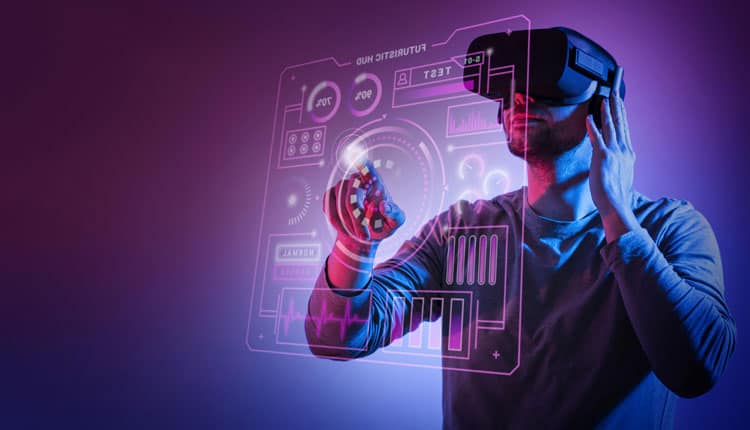In today’s rapidly evolving digital world, how we communicate and connect with others is undergoing a dramatic transformation. One of the most innovative forces behind this shift is the rise of digital avatars—AI-powered virtual beings that mimic human behavior and emotion. Originally known for their role in video games and virtual reality, digital avatars are now making waves across industries, changing the way we work, learn, heal, and entertain.
From interactive learning assistants to virtual therapists and brand ambassadors, digital avatars are reshaping the digital experience. Here’s how they’re making an impact across various fields—and what the future might hold.
Digital avatars are revolutionizing the customer support experience. Powered by AI and natural language processing, these avatars can handle queries, solve problems, and offer guidance in real time—24/7. They don’t just respond to questions; they can be customized to reflect a brand’s voice and personality, making interactions more relatable and engaging.
The result? Faster resolutions, better user experiences, and reduced operational costs for companies. Virtual avatars are especially useful during high-traffic periods, providing scalable solutions without sacrificing quality.
In the world of education, digital avatars are turning online learning into a more interactive and inclusive experience. Virtual teachers or tutors can deliver lessons, answer questions, and adapt to each student’s pace. This approach helps personalize learning and keeps students more engaged—especially in remote or hybrid learning environments.
Even more importantly, avatars are helping make education more accessible. They can support students with disabilities through tools like sign language, real-time text-to-speech, and visual aids, ensuring every learner can participate fully.
Avatars are already a big deal in gaming, but their influence is expanding fast. In games, they serve as lifelike characters that move, think, and respond like humans, creating immersive worlds and stories. But beyond games, avatars are starring in virtual concerts, hosting livestreams, and even interacting with fans in real time.
As virtual events become more common, avatars enable users to attend conferences, social meetups, or shows without being physically present—offering a new kind of social connection and creativity in digital spaces.
In healthcare, avatars are stepping into roles that make care more accessible and compassionate. In mental health, for instance, digital therapists can offer emotional support, lead guided sessions, and provide resources tailored to each individual’s needs. Patients often feel more comfortable opening up to avatars, especially when discussing sensitive topics.
Telemedicine is also evolving thanks to avatars. Doctors can use them to communicate with patients, review symptoms, and monitor progress—all without requiring a physical appointment. This is especially valuable in underserved or rural areas.
Behind every realistic and responsive avatar lies powerful technology. Artificial intelligence, machine learning, and 3D rendering are the building blocks. AI allows avatars to understand context, learn from interactions, and improve over time. Natural language processing ensures they communicate in ways that feel human.
Meanwhile, virtual reality (VR) and augmented reality (AR) bring avatars to life in more immersive ways. In VR, avatars can walk, gesture, and react like real people, offering users a lifelike digital experience. In AR, they can appear in real-world environments, blending physical and virtual spaces in innovative ways.
With all the benefits come important challenges. Privacy is a major concern—avatars often collect sensitive information like behavior patterns and biometric data. Companies must ensure this data is protected and not misused.
There’s also the issue of human connection. Some users may prefer interacting with real people, especially in roles like therapy or customer service. Businesses need to balance convenience with empathy and authenticity.
Finally, there’s the fear of job displacement. As avatars take on more roles, they may replace human workers in areas like support or instruction. The key will be finding a balance that complements, rather than replaces, human effort.
Looking ahead, the capabilities of digital avatars will only grow. Future avatars may be able to read and respond to human emotions in real-time, making them more empathetic and effective. They’ll likely play a bigger role in personal branding, allowing influencers, educators, and entrepreneurs to connect with global audiences as digital versions of themselves.
Avatars will also be at the heart of the metaverse and virtual economies. They’ll work, socialize, trade, and create—potentially opening up new types of jobs and businesses entirely within digital worlds. From customer service bots to virtual fashion designers, the possibilities are endless.
Digital avatars are more than just high-tech novelties—they’re becoming vital tools in how we live, work, and connect in the digital age. Whether they’re teaching a classroom, troubleshooting a tech issue, or performing on a virtual stage, avatars are enhancing experiences and breaking down barriers.
Of course, thoughtful implementation is essential. Balancing innovation with ethics, security, and human connection will determine how successful this technology becomes. But one thing is clear: digital avatars are here to stay—and they’re only getting smarter, more human-like, and more essential to our digital future.
Stay in touch to get more updates & news on News Ross!
